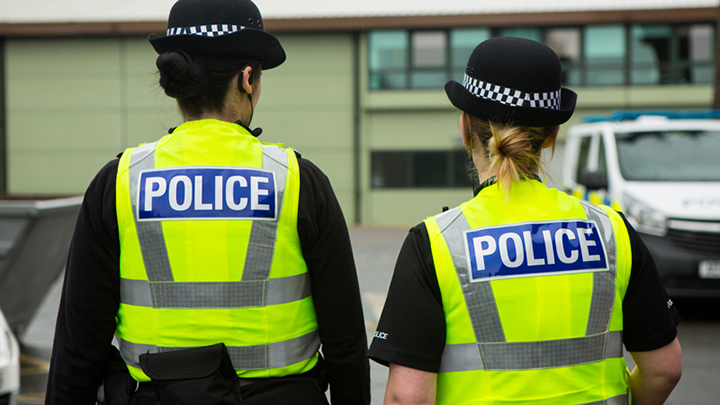The Home Office and police chiefs must continue to invest in researching and supplying police officers with body armour and uniform which is fit for the future, factoring in summers now reaching 40C.
PFEW National Uniform Co-lead Belinda Goodwin was a guest speaker for a webinar with the Emergency Services Times, focusing on whether PPE is fit for purpose today amid climate change, with hotter and wetter weather.
She was joined by Catherine Levin, editor at the EST, Richard Ballheimer, compliance manager for MSA Safety and Amy Beams, director at Women in the Fire Service.
PFEW is currently in the early stages of working with Loughborough University to help its researchers gather evidence on how police uniform should look moving into the future.
“With the way the weather is changing it is something we need to look at,” explained Belinda.
“We have been approached by academics at Loughborough University to do some work around this, to look at future uniform, especially with body armour around the right weights, the right shapes and also heat.
“We must see if there is more we can do to make it a more acceptable experience for officers who are sometimes in body armour for up to 12 hours a day – for example, during the unrest we have seen this year.
“It is really good to work with academics to see if we have got the right fabrics underneath our personal protective kit.”
The study is expected to run for more than a year and will incorporate pilots and human factor testing.
PPE withstanding hazardous and noxious substances was also discussed, where Belinda highlighted how there has been a rise in ‘acid’ attacks. Latest statistics show there has been a staggering 75 per cent increase in these crimes over the past year.
She added: “We of course have Chemical Biological Radiological and Nuclear responders to handle these incidents, however, frontline officers do not always know what they are walking into unless they are given intel ahead of time.”
When asked if women going through the menopause are supported adequately when it comes to uniform, she said: “In a nutshell, forces are not there yet. There has been an ongoing discussion with the Defence Science and Technology Group around cooling vests for under shirts, but it was shown it made them hotter as it’s another layer.”
More than one in three police officers (38 per cent) told us in our latest Menopause Survey the design of uniforms made coping with the symptoms of the menopause moderately or extremely difficult.
One officer explained: “Being operational during the summer, in a stab vest, and having to deal with hot flushes has been extremely uncomfortable. This is unavoidable due to my role; however, it has made coping with the symptoms more difficult.”
Belinda added forces should empower line managers to make reasonable adjustments for officers, including allowing and encouraging them to take off their body armour when they safely can.
“It is about investment. Women are staying in the job longer, with thousands going through the menopause. It’s about time it is recognised,” added Belinda.
As part of PFEW campaigning for better body armour, it worked with the Home Office as the Government department launched third generation body armour last year.
This is the first body armour to acknowledge gender specific requirements. Both suppliers offer designs that vary by gender and also provide greater overall protection by area.
Advances include too, what may be considered basic improvements, such as:
• Machine washable
• Use of endurance fabric that is highly durable
• Highly abrasion resistant
• High tear strength
• Stretch fabric for comfort
• Cooling ventilation systems to aid with temperature regulation
But these, along with the fact both suppliers are offering a lighter design in all iterations, combine to provide significant long-term advantages for the health of officers.
“I am happy we have third generation body armour that officers can access through their forces. We have also worked in collaboration with the University of Lancaster in creating the first ever national uniform survey in order to finally ask the men and women who are wearing the uniform day in and day out what their experience of the uniform is, and how we can improve it”, she continued.
“There is some good innovative work going on, other than Loughborough University, regarding other factors such as breast support. There is balance we must achieve between being comfortable and being safe.
“We don’t want officers to be so uncomfortable they take it off. It will never be 100 per cent comfortable but we must start looking at and investing in making it more comfortable, especially when it comes to heat.”
When asked for final thoughts on a ‘PPE wish list’, she said: “The best body armour of all, which is not too heavy, not too hot, fit for form, consistent across forces and ethically sourced.
“When you put your uniform on as a police officer, it tells me who I am for that day, that shift, and it tells you who I am. We all wear it with pride, and we want something to be proud of, but one of the main gripes we get from the membership is ‘my uniform is not great’."














